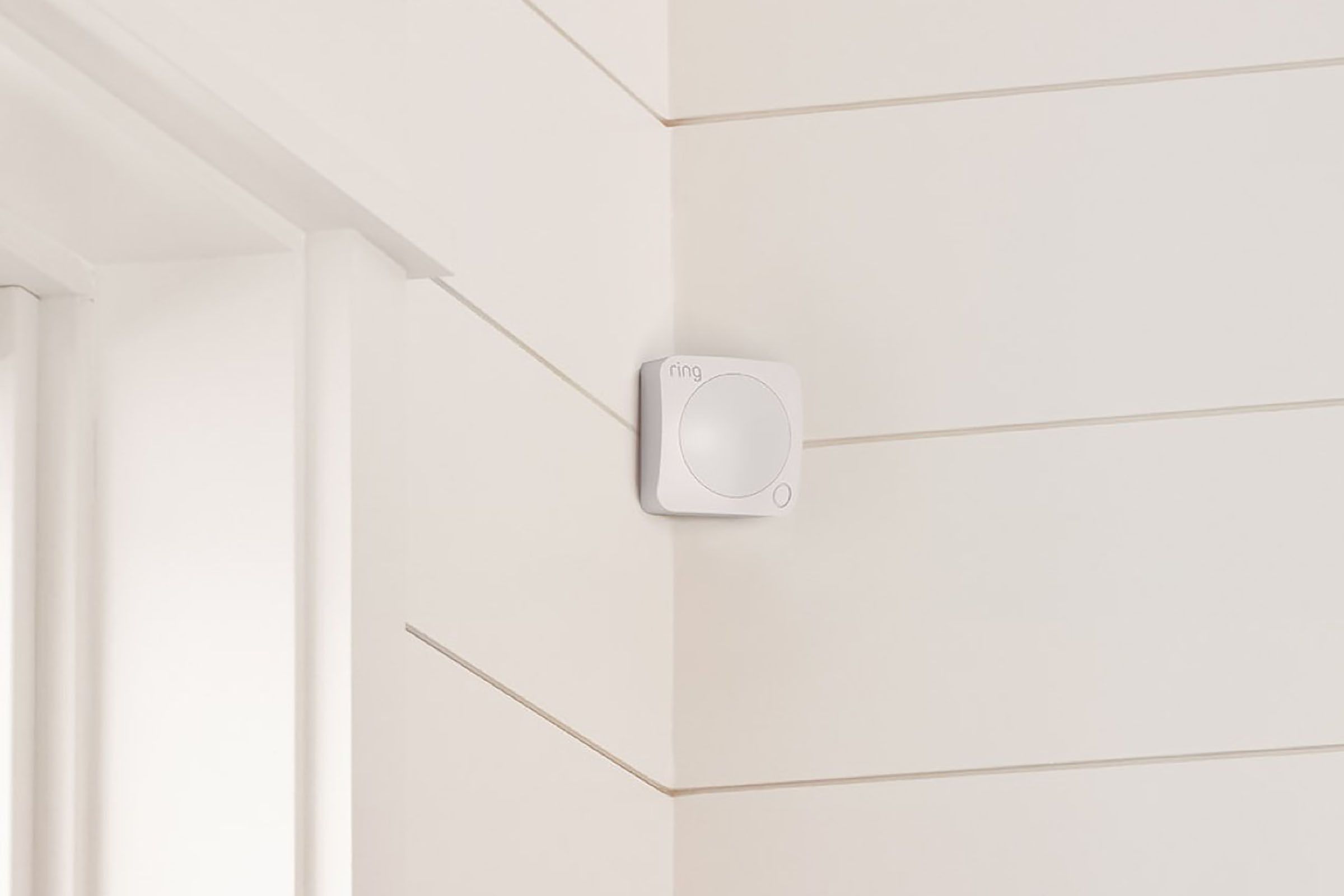Home>Interior Design>What Is The 10-3-2-1-0 Sleep Rule And Does It Work?


Interior Design
What Is The 10-3-2-1-0 Sleep Rule And Does It Work?
Modified: September 1, 2024
Learn about the 10-3-2-1-0 sleep rule and discover if it really works. Improve your interior design by implementing this effective sleep strategy.
(Many of the links in this article redirect to a specific reviewed product. Your purchase of these products through affiliate links helps to generate commission for Storables.com, at no extra cost. Learn more)
Introduction
Sleep is an essential component of our overall well-being and daily functioning. However, in today’s fast-paced world, many people often struggle to get enough restful sleep. This can lead to a variety of negative effects, including fatigue, decreased cognitive function, and overall decreased quality of life. To combat these issues, various strategies and techniques have emerged to improve sleep quality. One such approach is the 10-3-2-1-0 sleep rule.
The 10-3-2-1-0 sleep rule is a simple guideline that aims to optimize our sleep routine and promote better sleep hygiene. It emphasizes specific actions to take in the hours leading up to bedtime, gradually preparing the body and mind for a restful night’s sleep. In this article, we will explore the 10-3-2-1-0 sleep rule in more detail, including its meaning, benefits, implementation challenges, and the supporting research behind it.
The concept of the 10-3-2-1-0 sleep rule was popularized by sleep expert and author Shawn Stevenson. It provides a step-by-step framework that can be easily implemented into our daily routines to improve the chances of achieving high-quality sleep.
Key Takeaways:
- Prioritize sleep quality by following the 10-3-2-1-0 sleep rule, gradually winding down, limiting stimulants, and creating a sleep-friendly environment for restful nights and improved overall well-being.
- Overcome challenges in implementing the 10-3-2-1-0 sleep rule by managing time, reducing screen time, breaking habits, creating a sleep-friendly environment, and prioritizing consistency for optimal sleep habits.
Read more: How Many 2/0 Wires In 1-1/2 Inch Conduit
Explanation of the 10-3-2-1-0 Sleep Rule
The 10-3-2-1-0 sleep rule is a guideline that outlines specific actions to take leading up to bedtime to improve sleep quality. Each number in the rule represents a recommended timeframe for engaging in different activities that promote relaxation and prepare the body for sleep. Let’s break down each number and its corresponding action:
- 10 hours before bed: This is the time to start winding down and preparing for sleep. It’s recommended to avoid stimulants such as caffeine or nicotine, as they can interfere with sleep. Additionally, engaging in calming activities such as reading, taking a warm bath, or practicing relaxation techniques can help signal to your body that it’s time to start unwinding.
- 3 hours before bed: This is the time to avoid consuming heavy meals or large amounts of liquid, as they can disrupt sleep by causing indigestion or frequent trips to the bathroom. It’s also important to limit your exposure to electronic screens, such as smartphones, computers, and televisions, as the blue light emitted from these devices can interfere with the production of melatonin, a hormone that regulates sleep-wake cycles.
- 2 hours before bed: This is the time to complete any remaining work or tasks for the day. Engaging in activities that require mental or physical exertion, such as intense exercise or demanding cognitive work, should be avoided during this timeframe as they can make it difficult for the body and mind to relax and transition into sleep.
- 1 hour before bed: This is the time to start the bedtime routine, which may include activities such as brushing your teeth, changing into comfortable sleepwear, and engaging in relaxation techniques like light stretching or deep breathing exercises. Creating a consistent bedtime routine can help signal to your body that it’s time to sleep.
- 0 minutes before bed: Finally, when it’s time to go to sleep, it’s important to create a sleep-friendly environment. This means making sure your bedroom is cool, dark, and quiet. Remove any potential distractions, such as electronics or excessive noise, and make sure your mattress, pillows, and bedding are comfortable and supportive.
By following the 10-3-2-1-0 sleep rule, you can establish a healthy sleep routine that gradually prepares your body and mind for a restful night’s sleep, improving sleep quality and overall well-being.
The Meaning behind Each Number in the Sleep Rule
The 10-3-2-1-0 sleep rule breaks down specific timeframes before bedtime and provides guidance on the activities to engage in during those periods. Each number holds significance and aims to address different aspects that can impact sleep quality. Let’s delve deeper into the meaning behind each number in the sleep rule:
- 10 hours before bed: This timeframe emphasizes the importance of starting the wind-down process early. It allows for enough time to relax and unwind, reducing the likelihood of feeling rushed or stressed before bedtime. By avoiding stimulants and engaging in calming activities, you can signal to your body that it’s time to prepare for sleep.
- 3 hours before bed: Three hours before bed is the recommended cutoff time for consuming heavy meals and large amounts of liquids. This gives your body enough time to digest the food and decrease the likelihood of discomfort or disruptions during sleep. Limiting electronic screen exposure during this timeframe also helps to minimize the negative impact of blue light on melatonin production, promoting a more natural sleep-wake rhythm.
- 2 hours before bed: Two hours before bed is the time to avoid mentally or physically stimulating activities. Intense exercise, demanding cognitive work, or engaging in stressful discussions can make it harder for the body and mind to relax. This timeframe allows for a transition period, giving your body and mind a chance to unwind and prepare for sleep.
- 1 hour before bed: The final hour before bed is ideal for establishing a bedtime routine. Engaging in consistent activities, such as brushing your teeth, changing into comfortable sleepwear, and practicing relaxation techniques, sends signals to your body that it’s time to wind down and prepare for sleep. This routine can help ease the transition from wakefulness to sleep.
- 0 minutes before bed: Zero minutes before bed refers to creating a sleep-friendly environment. This means optimizing your bedroom for sleep by making it cool, dark, and quiet. Removing distractions and ensuring comfort in your sleep environment can enhance the quality of your sleep and create a conducive atmosphere for restful nights.
By understanding the meaning behind each number in the sleep rule, you can implement the recommended actions and gradually cultivate a sleep routine that promotes relaxation and optimal sleep quality.
Benefits of Following the 10-3-2-1-0 Sleep Rule
Implementing the 10-3-2-1-0 sleep rule can provide numerous benefits for your sleep quality and overall well-being. By following this guideline, you can improve your sleep routine, create a conducive environment, and establish healthy habits that promote restful nights. Here are some key benefits of adhering to the 10-3-2-1-0 sleep rule:
- Improved Sleep Quality: By gradually winding down before bed and engaging in relaxation techniques, you can improve the quality of your sleep. Following the rule allows your body and mind to transition from wakefulness to sleep more smoothly, leading to deeper and more restorative sleep.
- Enhanced Sleep Hygiene: The 10-3-2-1-0 sleep rule emphasizes the importance of creating a healthy sleep routine. By establishing consistent habits and rituals before bed, you can signal to your body that it’s time to sleep, promoting better overall sleep hygiene.
- Reduced Sleep Disruptions: Avoiding stimulants such as caffeine and heavy meals close to bedtime can help minimize sleep disruptions like indigestion and frequent trips to the bathroom. Limiting screen time and creating a sleep-friendly environment further contribute to uninterrupted and restful sleep.
- Increased Daytime Alertness: By ensuring adequate and restful sleep, following the 10-3-2-1-0 sleep rule can boost your daytime alertness and cognitive function. Improved sleep quality allows your body and mind to recharge, leading to increased focus, productivity, and overall well-being during the day.
- Support for Overall Health: Sleep plays a crucial role in maintaining overall health, including immune function, hormone regulation, and mental well-being. By prioritizing and optimizing your sleep, you can support these vital functions and improve your overall health and well-being.
Following the 10-3-2-1-0 sleep rule can have a profound impact on your sleep quality and overall health. By adopting this guideline, you can establish healthy sleep habits, promote relaxation, and ultimately enjoy the benefits of a consistently restful night’s sleep.
The 10-3-2-1-0 sleep rule is a guideline for better sleep: 10 hours before bed, no caffeine; 3 hours, no large meals or alcohol; 2 hours, no work; 1 hour, no screens; 0, lights out. It can help improve sleep quality.
Challenges and Tips for Implementing the Sleep Rule
While the 10-3-2-1-0 sleep rule offers a helpful framework for improving sleep quality, implementing it may present some challenges. Here are some common obstacles you may encounter and tips to overcome them in order to effectively incorporate the sleep rule into your routine:
- Time Management: One of the challenges is adjusting your schedule to allocate enough time for the recommended activities. To overcome this, plan your day in advance and prioritize tasks. Setting boundaries and managing your time effectively will enable you to allocate sufficient time for winding down before bed.
- Screen Time Reduction: Minimizing screen time, especially in the evening, can be challenging in our digital age. To address this, establish boundaries for yourself, such as setting a specific time to switch off electronic devices before bed. Engage in alternative activities like reading a book, engaging in hobbies, or spending quality time with loved ones to fill the void left by reduced screen time.
- Breaking Habits: Breaking habits, such as consuming caffeine late in the day or engaging in stimulating activities close to bedtime, can be difficult. Start by gradually reducing your consumption or incorporating healthier alternatives. Experiment with relaxation techniques or find a calming pre-sleep routine that works for you.
- Creating a Sleep-Friendly Environment: Adjusting your bedroom environment to promote better sleep can also present challenges. Ensure your bedroom is cool, dark, and quiet by using curtains or blinds, earplugs, or a white noise machine. Invest in a comfortable mattress and pillow to improve sleep comfort.
- Consistency: Maintaining a consistent sleep routine can be challenging, particularly when faced with a busy schedule or unexpected events. However, consistency is key for optimal sleep. Set a regular bedtime and waking time, and try to adhere to it as closely as possible. Make adjustments when necessary, but prioritize consistency to reinforce healthy sleep habits over time.
Overcoming these challenges requires commitment and patience. Remember that implementing the 10-3-2-1-0 sleep rule is a gradual process, and it may take time to adjust and see results. Stay consistent, be flexible when needed, and be mindful of the long-term benefits that a healthy sleep routine can bring.
Read more: What Is A Qc3.0 Adapter
Research and Evidence on the Effectiveness of the 10-3-2-1-0 Sleep Rule
While anecdotal evidence and personal experiences can provide valuable insights, it’s also important to explore the research and evidence supporting the effectiveness of the 10-3-2-1-0 sleep rule. Although research specifically focusing on this sleep rule is limited, several studies have examined the impact of various components of the rule on sleep quality. Here’s a summary of the key findings:
A study published in the journal Sleep Health investigated the relationship between electronic device use before bedtime and sleep patterns in young adults. The findings indicated that greater electronic media use within an hour of bedtime was associated with decreased sleep quality and increased sleep disturbances. This supports the recommendation in the sleep rule to limit screen time closer to bedtime.
Another study published in the Journal of Clinical Sleep Medicine explored the relationship between caffeine consumption and sleep quality. The findings revealed that consuming caffeine within six hours of bedtime can significantly disrupt sleep. This aligns with the sleep rule’s recommendation to avoid stimulants such as caffeine in the 10 hours leading up to bedtime.
Additionally, multiple studies have highlighted the benefits of establishing consistent bedtime routines. A review published in the journal Sleep Medicine Reviews found that regular sleep routines and bedtime rituals, such as practicing relaxation techniques or engaging in a pre-sleep routine, can improve sleep onset latency and overall sleep quality.
While the 10-3-2-1-0 sleep rule itself hasn’t been extensively studied, the individual components align with the findings of these studies. By incorporating recommendations supported by research, such as limiting screen time, avoiding stimulating activities, and establishing consistent bedtime routines, individuals can improve their sleep quality and overall well-being.
While more research specific to the 10-3-2-1-0 sleep rule is needed, the existing evidence suggests that following its guidelines can positively impact sleep quality. It’s important to remember that everyone’s sleep needs and habits are unique, and what works for one person may not work for another. Therefore, it’s crucial to pay attention to your own sleep patterns and adjust the sleep rule to fit your individual needs and preferences. Consulting with a sleep specialist can also provide personalized guidance and support in implementing the rule effectively.
Alternative Approaches to Improving Sleep Quality
While the 10-3-2-1-0 sleep rule offers a structured framework for optimizing sleep, it’s important to explore alternative approaches that can also contribute to improved sleep quality. Here are some additional strategies and techniques you can consider:
- Establish a Consistent Sleep Schedule: Going to bed and waking up at the same time every day, even on weekends, helps regulate your body’s internal clock. This consistency promotes better sleep quality and helps align your sleep-wake cycle.
- Create a Sleep-Friendly Environment: Make sure your bedroom is comfortable and conducive to sleep. Keep the room cool, dark, and quiet by using blackout curtains, earplugs, or white noise machines. Consider investing in a supportive mattress, pillows, and bedding that suit your personal preferences.
- Practice Relaxation Techniques: Engaging in relaxation techniques before bed can help calm your mind and prepare your body for sleep. This may include deep breathing exercises, meditation, progressive muscle relaxation, or aromatherapy with calming scents like lavender.
- Limit Stimulants: Apart from the 10-3-2-1-0 sleep rule’s recommendation to avoid caffeine, it’s advisable to limit consumption of other stimulating substances such as nicotine and alcohol. These can interfere with your ability to fall asleep and negatively impact sleep quality.
- Establish a Bedtime Routine: Creating a pre-sleep routine signals to your body that it’s time to wind down. Engage in relaxing activities, such as reading a book, taking a warm bath, or practicing gentle stretching. Find a routine that works for you and stick to it consistently.
- Manage Stress and Anxiety: Stress and anxiety can significantly disrupt sleep. Incorporate stress-management techniques into your daily routine, such as journaling, mindfulness, or seeking professional support through therapy or counseling.
- Avoid Heavy Meals Before Bed: Eating a large meal close to bedtime can interfere with digestion and disrupt sleep. Opt for lighter, easily digestible snacks if you feel the need to eat something before bed.
- Engage in Regular Physical Activity: Regular exercise can promote better sleep, but avoid intense workouts close to bedtime as they may energize the body and make it harder to fall asleep. Aim for moderate exercise earlier in the day.
Remember that improving sleep quality is a journey, and what works for one person may not work for another. It’s important to experiment with different approaches and find a combination of strategies that suits your individual needs and preferences. If you continue to experience persistent sleep problems, it may be beneficial to consult with a healthcare professional or sleep specialist to further explore potential underlying issues and receive personalized guidance.
Conclusion
Getting enough quality sleep is vital for our overall well-being and daily functioning. The 10-3-2-1-0 sleep rule is a simple yet effective guideline that can significantly improve sleep quality by incorporating specific actions and habits into our pre-sleep routine. By gradually winding down before bed, limiting stimulants, and creating a sleep-friendly environment, we can optimize our sleep and enjoy the benefits of restful nights.
The components of the sleep rule are supported by research and evidence, indicating that activities like limiting screen time, avoiding heavy meals or caffeine close to bedtime, and establishing consistent bedtime routines are linked to better sleep quality. However, it’s important to remember that implementing the sleep rule may present challenges, such as time management, breaking habits, or creating a sleep-supportive environment. With patience, commitment, and personalized adjustments, these challenges can be overcome.
It’s worth mentioning that the 10-3-2-1-0 sleep rule is not the only approach to improving sleep quality. Alternative strategies, such as establishing a consistent sleep schedule, practicing relaxation techniques, managing stress, engaging in regular physical activity, and creating a bedtime routine, can also contribute to better sleep. Each individual’s sleep needs and preferences vary, so it’s important to find a combination of techniques that work best for you.
Prioritizing and optimizing our sleep based on the principles of the 10-3-2-1-0 sleep rule, or other alternative approaches, can lead to numerous benefits. These include improved sleep quality, enhanced sleep hygiene, reduced sleep disruptions, increased daytime alertness, and support for overall health. Remember, the path to better sleep is a continuous journey, and it may take time and experimentation to find the right strategies that work for you.
So, let’s strive to prioritize our sleep, create healthy bedtime routines, and implement the guidelines of the 10-3-2-1-0 sleep rule or other personalized approaches. By doing so, we can cultivate restful nights, wake up refreshed, and enjoy the numerous benefits of a good night’s sleep.
Frequently Asked Questions about What Is The 10-3-2-1-0 Sleep Rule And Does It Work?
Was this page helpful?
At Storables.com, we guarantee accurate and reliable information. Our content, validated by Expert Board Contributors, is crafted following stringent Editorial Policies. We're committed to providing you with well-researched, expert-backed insights for all your informational needs.















0 thoughts on “What Is The 10-3-2-1-0 Sleep Rule And Does It Work?”